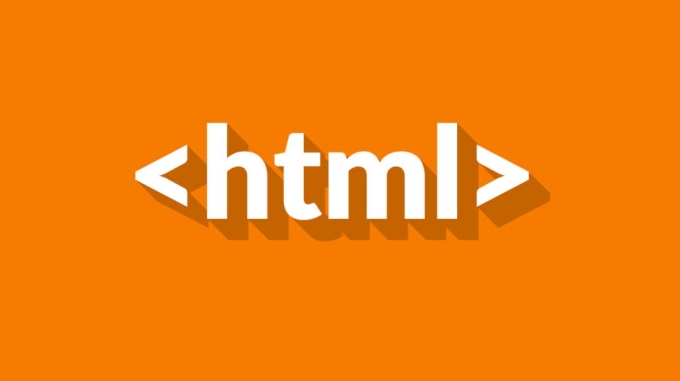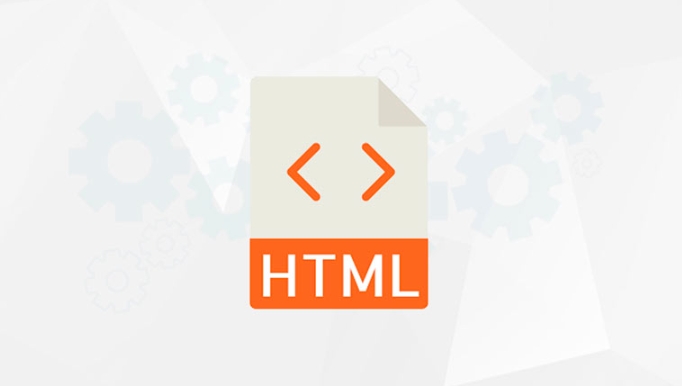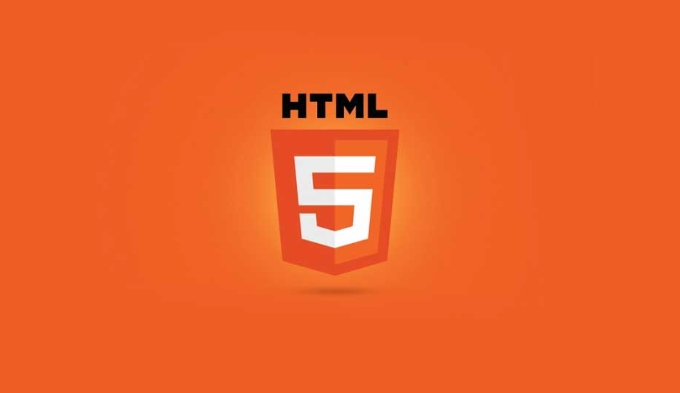What is the purpose of using data-* attributes on HTML tags?
Jun 28, 2025 am 01:07 AMCustom data attributes like data-role="button" are used to store extra information in HTML elements for easier access via JavaScript. They allow developers to attach small bits of related data directly to elements, such as item IDs (data-id), temporary state (data-state="active"), or configuration settings (data-options). These attributes help avoid maintaining separate JavaScript data structures and are especially useful in dynamic UIs. 1. They simplify element selection using CSS selectors like document.querySelectorAll('[data-role="tab"]'). 2. The dataset property provides a standardized way to access values in JavaScript, converting data-user-id to element.dataset.userId. 3. While not suited for large-scale or sensitive data storage, they offer a safe, standards-compliant method to connect HTML and JavaScript seamlessly for lightweight needs.

When you see HTML tags with attributes like data-role="button" or data-user-id="123", it's not just random code — there’s a clear purpose behind it. These are called custom data attributes, and they're used to store extra information right inside your HTML elements in a way that’s both valid and easy to access from JavaScript.

Keeping Data Tied to Elements
One of the main reasons to use data-* attributes is to attach small bits of related data directly to an element. For example, if you have a list of user cards on a page, you might store each user’s ID in a data-user-id attribute. That way, when someone clicks a card, your JavaScript can quickly grab that ID without needing to look it up somewhere else.

This helps avoid situations where you’d otherwise need to maintain separate data structures in JavaScript just to keep track of which element corresponds to which data. It’s especially useful in dynamic UIs where elements are added or removed frequently.
Some common uses:

- Storing item IDs (
data-id) - Holding temporary state (
data-state="active") - Attaching configuration settings (
data-options='{ "speed": "fast" }')
Making JavaScript Selection Easier
Another big benefit is how cleanly they work with CSS selectors and JavaScript. Since they follow a standard format, you can select elements based on their data values using querySelectorAll. For instance:
document.querySelectorAll('[data-role="tab"]')This makes it simple to target only the elements you care about without relying on class names or other attributes that might change for styling reasons.
Also, because the naming starts with data-, you don’t have to worry about conflicting with existing or future HTML attributes. It’s a safe, standardized way to add your own metadata.
Accessing Data in a Standard Way
HTML5 introduced a neat shortcut for accessing these values via JavaScript: the dataset property. If you have an element with data-user-id="789", you can read it like this:
element.dataset.userId // returns "789"
Notice that the attribute name is camelCase after data-, so data-user-id becomes userId. This built-in method makes working with custom data attributes clean and consistent across modern browsers.
You’ll often see this used in frameworks or libraries to pass initial configuration or metadata into components without requiring extra AJAX calls or global variables.
Using data-* attributes isn't always the best solution for large-scale data storage or complex application state — that’s what JavaScript objects and state management tools are for. But for lightweight, element-specific data needs, they’re a solid, standards-compliant choice. Just keep in mind that anything stored in data-* is public and visible in the source, so it shouldn’t contain sensitive info.
That’s basically it. Not magic, just a practical tool for connecting HTML and JavaScript more smoothly.
The above is the detailed content of What is the purpose of using data-* attributes on HTML tags?. For more information, please follow other related articles on the PHP Chinese website!

Hot AI Tools

Undress AI Tool
Undress images for free

Undresser.AI Undress
AI-powered app for creating realistic nude photos

AI Clothes Remover
Online AI tool for removing clothes from photos.

Clothoff.io
AI clothes remover

Video Face Swap
Swap faces in any video effortlessly with our completely free AI face swap tool!

Hot Article

Hot Tools

Notepad++7.3.1
Easy-to-use and free code editor

SublimeText3 Chinese version
Chinese version, very easy to use

Zend Studio 13.0.1
Powerful PHP integrated development environment

Dreamweaver CS6
Visual web development tools

SublimeText3 Mac version
God-level code editing software (SublimeText3)
 The `` vs. `` in HTML
Jul 19, 2025 am 12:41 AM
The `` vs. `` in HTML
Jul 19, 2025 am 12:41 AM
It is a block-level element, used to divide large block content areas; it is an inline element, suitable for wrapping small segments of text or content fragments. The specific differences are as follows: 1. Exclusively occupy a row, width and height, inner and outer margins can be set, which are often used in layout structures such as headers, sidebars, etc.; 2. Do not wrap lines, only occupy the content width, and are used for local style control such as discoloration, bolding, etc.; 3. In terms of usage scenarios, it is suitable for the layout and structure organization of the overall area, and is used for small-scale style adjustments that do not affect the overall layout; 4. When nesting, it can contain any elements, and block-level elements should not be nested inside.
 Specifying Character Encoding for HTML Documents (UTF-8)
Jul 15, 2025 am 01:43 AM
Specifying Character Encoding for HTML Documents (UTF-8)
Jul 15, 2025 am 01:43 AM
To correctly set the character encoding of the HTML document to UTF-8, you need to follow three steps: 1. Add at the top of the HTML5 part; 2. Configure the response header Content-Type: text/html; charset=UTF-8, if Apache uses AddDefaultCharsetUTF-8, Nginx uses charsetutf-8; 3. Select the UTF-8 encoding format when saving HTML files in the editor. These three links are indispensable, otherwise it may lead to garbled page code and failure of special character parsing, affecting user experience and SEO effect. It is important to ensure that HTML declaration, server configuration and file saving are consistent.
 Essential HTML Tags for Beginners
Jul 27, 2025 am 03:45 AM
Essential HTML Tags for Beginners
Jul 27, 2025 am 03:45 AM
To get started with HTML quickly, you only need to master a few basic tags to build a web skeleton. 1. The page structure is essential, and, which is the root element, contains meta information, and is the content display area. 2. Use the title. The higher the level, the smaller the number. Use tags to segment the text to avoid skipping the level. 3. The link uses tags and matches the href attributes, and the image uses tags and contains src and alt attributes. 4. The list is divided into unordered lists and ordered lists. Each entry is represented and must be nested in the list. 5. Beginners don’t have to force memorize all tags. It is more efficient to write and check them while you are writing. Master the structure, text, links, pictures and lists to create basic web pages.
 Shadow DOM Concepts and HTML Integration
Jul 24, 2025 am 01:39 AM
Shadow DOM Concepts and HTML Integration
Jul 24, 2025 am 01:39 AM
ShadowDOM is a technology used in web component technology to create isolated DOM subtrees. 1. It allows the mount of an independent DOM structure on ordinary HTML elements, with its own styles and behaviors, and does not affect the main document; 2. Created through JavaScript, such as using the attachShadow method and setting the mode to open; 3. When used in combination with HTML, it has three major features: clear structure, style isolation and content projection (slot); 4. Notes include complex debugging, style scope control, performance overhead and framework compatibility issues. In short, ShadowDOM provides native encapsulation capabilities for building reusable and non-polluting UI components.
 HTML `style` Tag: Inline vs. Internal CSS
Jul 26, 2025 am 07:23 AM
HTML `style` Tag: Inline vs. Internal CSS
Jul 26, 2025 am 07:23 AM
The style placement method needs to be selected according to the scene. 1. Inline is suitable for temporary modification of single elements or dynamic JS control, such as the button color changes with operation; 2. Internal CSS is suitable for projects with few pages and simple structure, which is convenient for centralized management of styles, such as basic style settings of login pages; 3. Priority is given to reuse, maintenance and performance, and it is better to split external link CSS files for large projects.
 Why is my image not showing up in HTML?
Jul 28, 2025 am 02:08 AM
Why is my image not showing up in HTML?
Jul 28, 2025 am 02:08 AM
Image not displayed is usually caused by a wrong file path, incorrect file name or extension, HTML syntax issues, or browser cache. 1. Make sure that the src path is consistent with the actual location of the file and use the correct relative path; 2. Check whether the file name case and extension match exactly, and verify whether the image can be loaded by directly entering the URL; 3. Check whether the img tag syntax is correct, ensure that there are no redundant characters and the alt attribute value is appropriate; 4. Try to force refresh the page, clear the cache, or use incognito mode to eliminate cache interference. Troubleshooting in this order can solve most HTML image display problems.
 Can you put a tag inside another tag?
Jul 27, 2025 am 04:15 AM
Can you put a tag inside another tag?
Jul 27, 2025 am 04:15 AM
?Youcannotnesttagsinsideanothertagbecauseit’sinvalidHTML;browsersautomaticallyclosethefirstbeforeopeningthenext,resultinginseparateparagraphs.?Instead,useinlineelementslike,,orforstylingwithinaparagraph,orblockcontainerslikeortogroupmultipleparagraph
 HTML `link` for Prefetching DNS
Jul 23, 2025 am 02:19 AM
HTML `link` for Prefetching DNS
Jul 23, 2025 am 02:19 AM
Pre-resolving DNS can speed up page loading speed, and using HTML link tags for DNS pre-resolving is an effective method; DNSPrefetching saves subsequent request time by resolving domain names in advance; applicable scenarios include third-party fonts, advertising statistics scripts, resource hosting and CDN domain names; it is recommended to prioritize the main page dependency resources, reasonably control the number between 3 and 5, and use it with preconnect to better effect.






